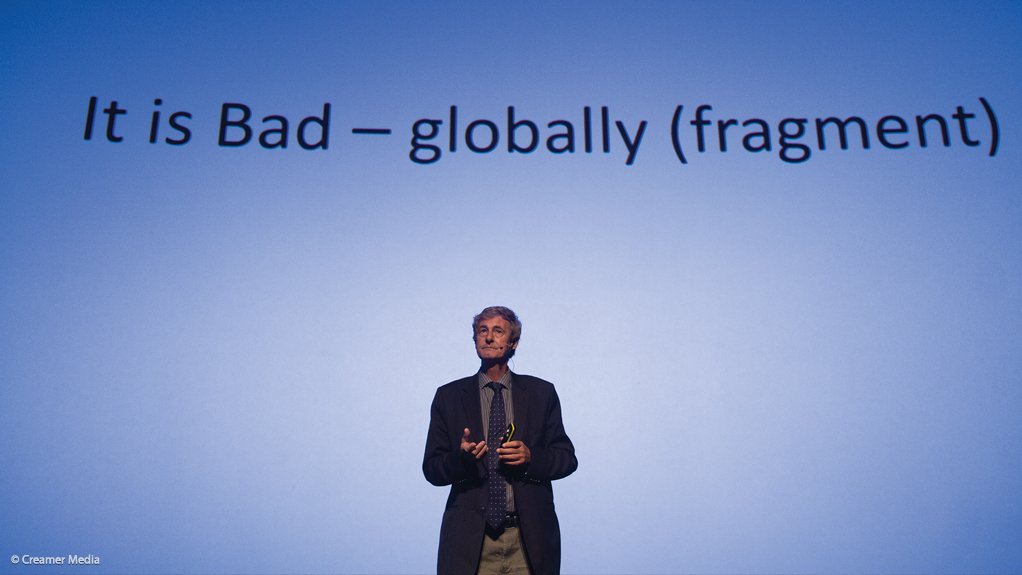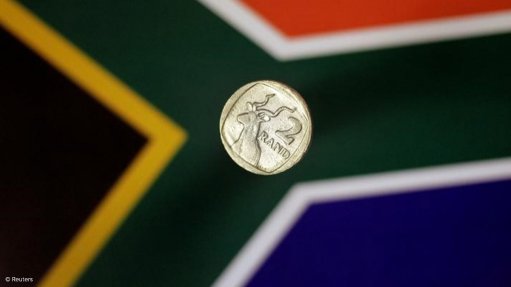Possible 'break in the clouds' for S African economy
With Moody’s Investors Service considering a possible downgrade for South Africa, consulting economist Cees Bruggemans on Thursday said the demotion to junk status probably could not be averted as it was “already in the system”; however, there seemed to be a break in the clouds that could facilitate change in future generations.
Moody’s was heading to South Africa’s shores from March 16 to 18 following the placing of the nation’s respective long- and short-term ratings of Baa2 and P-2 on review, to assess the extent to which government policy could stabilise the economy and restore fiscal strength amidst heightened domestic and international market volatility.
However, Bruggemans believed South Africa had already been “discounted”, with the junk status already in the market and it would not take much for the country to tip into negative territory as it straddled the 0% growth line.
Speaking at the Datacentrix Business Showcase, in Johannesburg, he said, with growth of less than 1%, the country was already skimming the zero line – a tipping point for recession.
The motor industry, he said, had been in recession for the past two years – a strong indicator that “something was wrong” in the broader system – while the drought had pushed the agricultural sector into the negative in the last quarter of 2015.
Mining continued within its strained environment, while manufacturing was drifting “in and out of a coma” or near recession every other quarter.
Earlier in March, he issued a statement pointing out that electricity generation was in recession, as consumers responded negatively to excessive tariff increases amid higher inflation and interest rate increases eroding real disposable income.
Further, he told delegates that the South African Reserve Bank’s leading indicator index showed a sliding trend, business confidence, for the first time, was riding half-mast and consumer confidence had seen a similar slide into negative territory over the past two to three years.
Growth was a “bridge too far” and was just not coming into focus.
However, despite the bleak economic outlook, there seemed to be a shift after years of “essentially going one way”, Bruggemans pointed out.
“I see a break in the clouds; something is stirring,” he said, alluding to a “shift” becoming apparent.
South Africa experienced some major local breakthroughs in terms of past recklessness, including addressing the fallout over the rash firing of former Finance Minister Nhlanhla Nene; addressing lawlessness, in respect of the official reaction to the Public Protector’s report on the Nkandla upgrades and the latest scandal to hit the South African Revenue Service; and addressing credibility as “new-old” Finance Minister Pravin Gordhan attempted to mitigate the budget deficit, ensure State-owned companies’ good governance and attempt to avoid a downgrade.
“Recklessness has been checked by common sense and a flick of many market whips, lawlessness has been checked by constitutional and institutional strengths. And credibility loss has been addressed by Gordhan’s Budget 2016. That, too, is a start,” he said.
South Africa’s internal headwinds and issues were visible, he noted, in “clashing, competing paradigms”, such as “struggle versus economics 101, traditional versus modernists and public versus private”.
“Most of these internal headwinds have their origins in the ‘struggle’ paradigm of government; choosing policies that connect with [the ruling party's] sense of past and future, but which do not at all resonate well with many private businesses working in a competitive global market paradigm free of political frivolity.”
A start had been made, in the form of the local breakthroughs mentioned, but it would take time to play out. He warned that one, unified paradigm working in one direction would result in 5% to 6% growth, but two competing paradigms would keep South Africa at 0% growth.
Comments
Press Office
Announcements
What's On
Subscribe to improve your user experience...
Option 1 (equivalent of R125 a month):
Receive a weekly copy of Creamer Media's Engineering News & Mining Weekly magazine
(print copy for those in South Africa and e-magazine for those outside of South Africa)
Receive daily email newsletters
Access to full search results
Access archive of magazine back copies
Access to Projects in Progress
Access to ONE Research Report of your choice in PDF format
Option 2 (equivalent of R375 a month):
All benefits from Option 1
PLUS
Access to Creamer Media's Research Channel Africa for ALL Research Reports, in PDF format, on various industrial and mining sectors
including Electricity; Water; Energy Transition; Hydrogen; Roads, Rail and Ports; Coal; Gold; Platinum; Battery Metals; etc.
Already a subscriber?
Forgotten your password?
Receive weekly copy of Creamer Media's Engineering News & Mining Weekly magazine (print copy for those in South Africa and e-magazine for those outside of South Africa)
➕
Recieve daily email newsletters
➕
Access to full search results
➕
Access archive of magazine back copies
➕
Access to Projects in Progress
➕
Access to ONE Research Report of your choice in PDF format
RESEARCH CHANNEL AFRICA
R4500 (equivalent of R375 a month)
SUBSCRIBEAll benefits from Option 1
➕
Access to Creamer Media's Research Channel Africa for ALL Research Reports on various industrial and mining sectors, in PDF format, including on:
Electricity
➕
Water
➕
Energy Transition
➕
Hydrogen
➕
Roads, Rail and Ports
➕
Coal
➕
Gold
➕
Platinum
➕
Battery Metals
➕
etc.
Receive all benefits from Option 1 or Option 2 delivered to numerous people at your company
➕
Multiple User names and Passwords for simultaneous log-ins
➕
Intranet integration access to all in your organisation





















